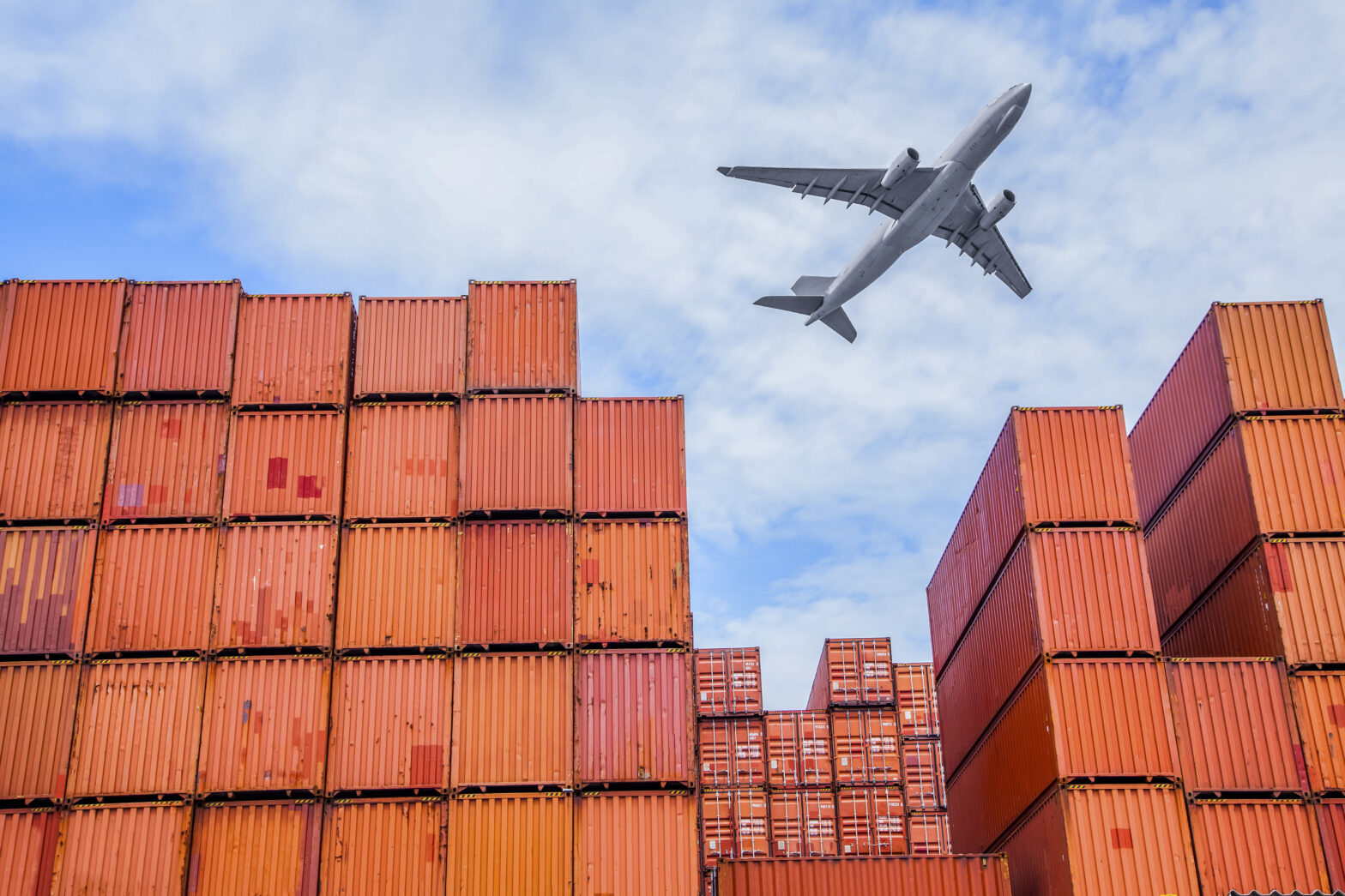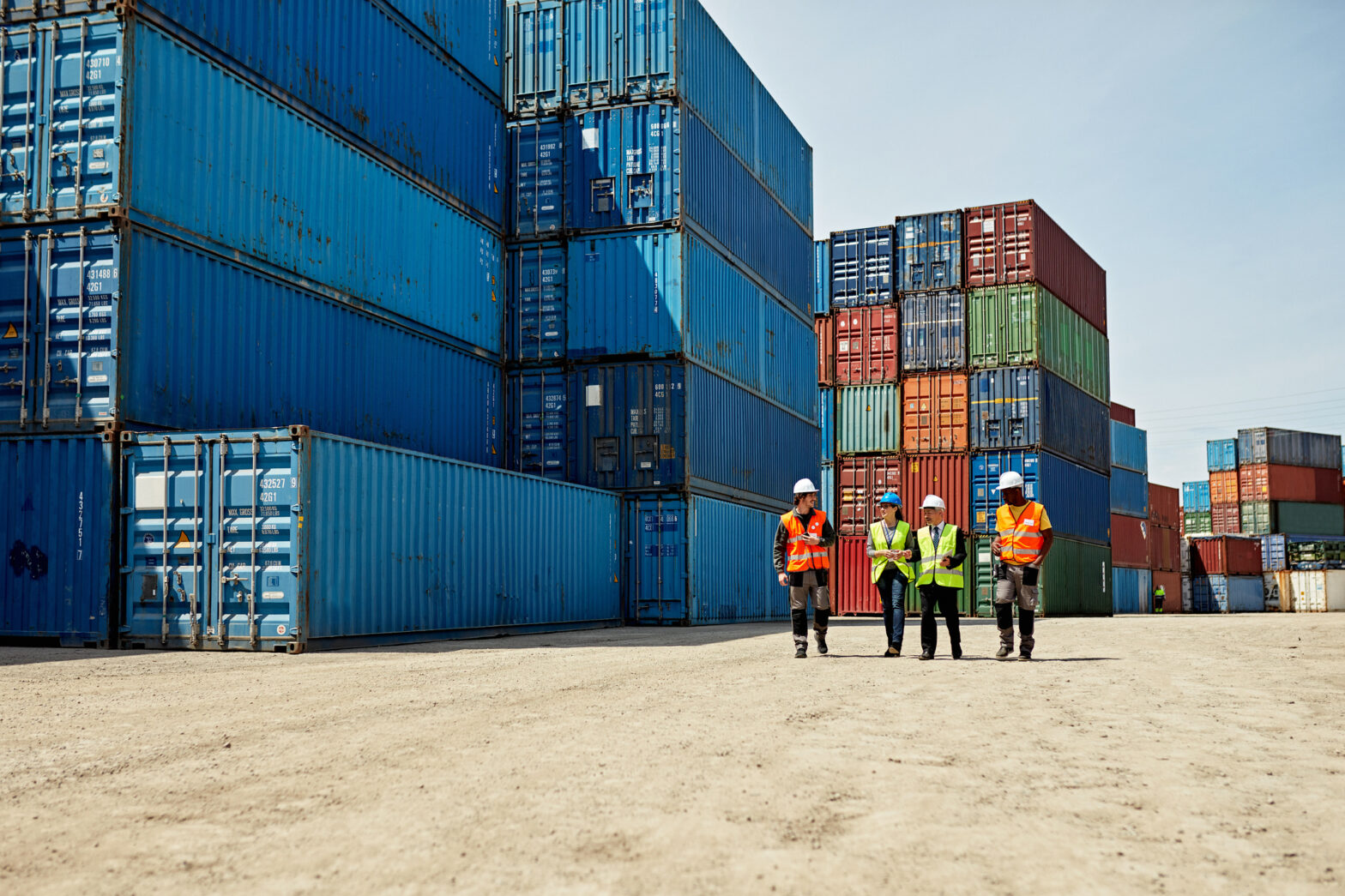Air freight is used most commonly when moving small high value items, or goods which are urgently required. The costs of air freight are significantly higher than those associated with sea freight, and are usually calculated based on weight rather than volume (which is used for sea cargo).
In 2016, some 54 million metric tonnes of goods was transported by air cargo. However, the cost of moving goods across the world has fallen significantly in recent years. Supply outstrips demand in some areas, making the price of moving goods via air freight cheaper than ever before on some routes.
If you’re weighing up your options for importing or exporting, you’ll want to do some research on the advantages and disadvantages of using air freight. Here’s all you need to know.
>See also: The essential guide to sea freight: Process, costs and timelines
What is air freight?
Air freight – moving goods, unaccompanied, by plane – is typically used for urgent deliveries, or products which are very expensive to produce. It’s relatively pricey compared to sea freight, and there are restrictions on what can be safely and legally transported using air freight.
There are several different choices when it comes to arranging an air freight delivery:
- Consolidated freight – consols – where one flight contains many different shipments.
- Back to back or direct services – here a single shipment is transported in the hold of a scheduled plane
- Charter services – occasionally, and at a very high cost – entire freight planes can be chartered for a single air freight delivery.
These shipments might be placed in the hold area of passenger planes or in dedicated freight planes, which can accommodate huge amounts of cargo on one flight.
What are the advantages of air freight?
There are a number of good reasons to choose to move your products by air. Here are some of them:
- Air freight is quick – especially if you use a direct service. You can expect shipments by air to arrive in days, while sea freight services inevitably take several weeks
- Air freight deliveries are charged based on weight rather than volume. They’re typically good value for smaller deliveries
- Shipping companies will be able to give you a few different options for arranging your air freight delivery, including consols and direct routes, as set out above
- As long as it is correctly packaged, air freight is usually a good way of moving fragile or valuable products. Damage is less likely compared to sea freight
- Air freight is tracked much like passengers on an airplane – security is tight.
What are the disadvantages of air freight?
Whether or not air freight works for your shipment will depend on exactly what you’re moving, and to where.
Here are some possible downsides you’ll want to take into consideration:
- Using air freight is much more expensive than sea freight – not only for the the delivery itself, but also for import duty and VAT which are calculated as a percentage cost of the cost of goods + cost of shipping
- If you’re using a consolidated freight shipment then you’ll have to wait until the flight is full before it is sent. That can mean it’ll take a few days, with flights going once or twice a week to main destinations
- There are much stricter regulations about what can – and can not – be moved by air compared to by sea freight. More on that in a moment.
- Air freight is considered to be environmentally unfriendly compared to shipping goods by sea.
Air freight costs – what can you expect to pay for?
Air freight pricing is usually based on the weight of goods being moved. However, if you’re trying to ship particularly large or oddly shaped objects, this might incur some surcharges. Using a consolidated freight route is usually the cheapest, although it might take a few days longer than a direct consignment.
The best prices are offered for goods which fill the standard size Unit Load Devices – ULDs – which go into the front part of the hold of a plane. These usually measure around 307cm long x 213cm wide x193 cm high.
Air freight costs vary significantly depending on what you’re moving and where. You can get a good idea of the range of costs from different providers, using a freight calculator – there’s one linked in the source section below for reference.
>See also: The essential guide to commodity codes
Here are some examples of the average market rate, for sending a 50kg box of low value general merchandise to the UK from different origin airports:
- From Malaga, Spain – USD 390 – 430
- From Shenzhen, China – USD 440 – 490
- From Bangladesh – USD 530 – 590
- From Mexico City, Mexico – USD 420 – 460
- From Sydney, Australia – USD 380 – 420
But it’s not just the amount the airline will charge that you need to think about. You’ll need to take into consideration the following when you’re working out the cost of your air freight consignment:
- Cost of goods
- Cost of delivery
- UK import duty if relevant – calculated as a percentage of cost of goods + cost of delivery
- UK VAT – calculated as 20 per cent of cost of goods + cost of delivery + cost of import duty
It’s worth noting that, because import duty and VAT are calculated as a percentage of the cost of goods + the cost of delivery, you’ll pay more in taxes and duty to import the same product by air rather than by sea. If you’re importing low value items this can make a significant difference to your profit margins.
Tip: When you’re looking to protect your business’ profitability, it’s not just the costs of duties and taxes you have to worry about. If you’re dealing with suppliers based overseas, you’ll also need to make sure you’re not hit by high bank fees for international money transfers.
Traditional banks tend to charge steep fees for moving money across borders – with an upfront fee and add a margin to the exchange rate they use. Many UK businesses working internationally find they’re better off using a service that specialises in international payments, such as TransferWise, when they pay overseas invoices. TransferWise is different than your bank, as it’ll give you the best available exchange rate for your transfer, with no hidden fees.
If you’re going to be working across multiple currencies frequently then there are ways to save even more with TransferWise. It’s actually a multi-currency borderless account that lets you hold your cash in over 40 currencies in the same account, and switch between currencies as and when you need to. There’s just a small transparent fee each time you convert money – and zero nasty surprises to worry about.
>See also: EORI number: What it is and how to get or check one
How air freight works
In most cases, air freight is arranged by skilled freight forwarding agencies. They might be large organisations which also arrange courier services and sea freight, for example. They’ll certainly have experience in navigating the customs processes and logistics of moving goods internationally.
Here are the general steps you’ll need to take to arrange to receive your goods via air freight:
- Choose an air freight forwarding company, and agree a price for the service you require
- The freight forwarder will collect the goods from your supplier – either they’ll be already packed (known as RFT – ready for travel), or the forwarder will carry out the necessary packing
- Your goods are taken to the airport, and need to clear customs at the point of origin
- Goods are loaded into the plane for their journey. In the case of a consolidated shipment this could take a few days
- On arrival in the UK, the goods have to pass customs again and will be only be released when all duty and taxes are paid
- The goods are delivered to you as per your agreement with the freight forwarding agency.
How long does air freight take?
Your freight forwarding agency will advise you on the expected arrival time for your shipment. As a guide, it it likely to take a week or so from most locations to the UK.
Some import agencies claim to be able to bring items from a Chinese factory, to a UK store, in as little as 5 days. However, as we mentioned above, to send goods by air in the most cost effective way, you’re likely to be using a consol service, which can increase the time taken a little.
Air cargo
Just like when you travel on an aeroplane as a passenger, there is a fairly long list of items you can’t send via air freight. Mostly these won’t prove surprising if you’ve ever been on a plane journey before. For example, you can’t air freight items such as:
- Explosives
- Gases
- Flammable or radioactive items
- Toxic and infectious items, chemicals or other products which carry safety warnings
- Strong magnets
- Anything considered dangerous to public health.
If your goods can’t be transported by air freight you might want to consider using sea freight instead. There are far fewer restrictions on what can be carried, although all goods must still be properly declared and labelled to ensure that they’re packaged and transported safely, and the importer has the correct licenses in place if necessary.
Air freight quote
Getting a quote for your air freight shipment should be pretty straight forward. You can either choose a specific freight forwarder and make all the arrangements directly through them, or try an online quotation tool to gather quotations from a number of different providers. Many national airlines also offer cargo services, so this can be a good place to start looking for quotes.
Air freight companies
If you’d rather work directly with a specific freight forwarding agency, then you might choose one of the large air freight companies set out below.
- Fedex has the largest aircraft fleet in the world, and is a global leader in express deliveries
- UPS was established in 1907 and now services over 200 countries for package and freight deliveries
- Group Emirates SkyCargo – part of the Emirates airline group, this is one of the largest cargo operations of any passenger airline, carrying millions of tonnes every year.
Air freight tracking
Air freight is closely tracked through its journey from one destination to another. As a customer you should be able to see where your cargo is, live, thanks to electronic tracking on all shipments. As you would expect with any airport process, security is tight, and safety checks are thorough on cargo in the same way as they are with passengers. After all, your goods might be shipped in the belly of a regular passenger plane.
Air freight is a good option for high value or urgent shipments – and is more affordable than ever at the moment. Talk to a specialist freight forwarder to help you decide if it’s the right route for your business.
Related Topics
Comments are closed.






How do I as a owner operator go by contracting to pickup and delivery ?